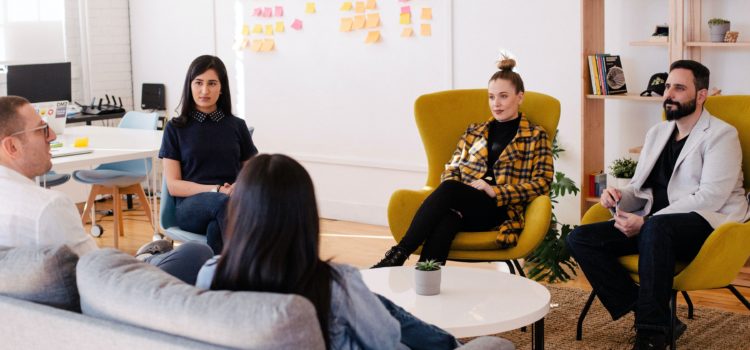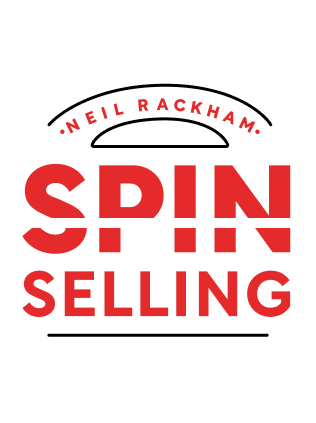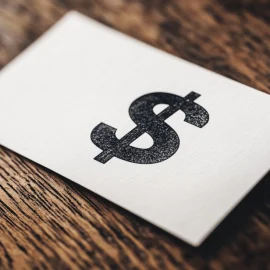

This article is an excerpt from the Shortform summary of "Spin Selling" by Neil Rackham. Shortform has the world's best summaries of books you should be reading.
Like this article? Sign up for a free trial here .
What is SPIN selling? What does it stand for, and how does it work?
SPIN selling is a sales strategy based on asking the right questions. So when you ask “what is SPIN selling,” you’re already on your way. Find out the answer to “what is SPIN selling” below.
What Is SPIN Selling?
So, what is SPIN selling, and what does SPIN selling stand for?
Researchers found that successful reps handled the investigating stage differently. Rather than focusing on asking open and closed questions in large sales, they asked four different types of questions in a sequence. These successful reps’ investigating questions can be described as the SPIN sequence, which is explained in detail throughout this summary. Here’s an overview:
1) S-Situation questions: Start by asking fact-finding and background questions, such as
“What do you see as the company’s biggest growth opportunities?” Asking too many of these questions can impose on the customer’s time and patience, so use them judiciously.
2) P-Problem questions: Once you understand the customer’s situation, ask questions that explore problems or issues your product or solution can solve—for instance, “Are you concerned about meeting your clients’ quality standards with your aging equipment?” Less experienced reps may not ask enough of these questions.
3) I-Implication questions: Asking good situation and problem questions may be enough to win a small sale. However, you need to go further in large sales and ask a more sophisticated question that explores the implications or ramifications of a customer’s problem—for example, “How will this affect your fourth-quarter results?”, or “What will this mean for your biggest customer?” The point is to underscore a problem’s significance, and create a sense of urgency for solving it. These are more difficult questions to frame, even for experienced salespeople.
4) N-Need-payoff questions: These questions lead the customer to articulate the benefits of your product or solution. For example, you might ask, “How useful would it be if we could increase your output by 10%?”, or “How would being able to reduce errors help you?” Need-payoff questions contribute strongly to sales success. Top reps ask these questions 10 times more often than average reps.
Asking SPIN questions is the best way to use the investigating phase of a sales call.
Remember this acronym, and you’ll be on your way to using SPIN. Plus, you’ll be able to answer other interested salespeople who want to know what does SPIN selling stands for.
The SPIN Model in Action
Now that you’ve answered the question, “what is SPIN selling?”, you need to see how it work. The SPIN sales model is effective because it guides reps to ask questions that are important and relevant to the customer, as opposed to focusing on whether questions are open or closed. It moves the customer through a naturally unfolding process of uncovering and developing implied needs, and then evolving them into explicit needs.
Here’s a summary showing the flow:
- The seller asks situation questions to understand the buyer’s context, leading to
- problem questions that help the buyer uncover implied needs,
- which the seller develops through implication questions that emphasize the magnitude of the problem,
- leading the buyer to state explicit needs,
- to which the seller responds with need-payoff questions,
- which allow the buyer to identify benefits, which contribute strongly to sales success.
The sequence may vary at times. For instance:
- A customer may start by stating an explicit need, and you can ask need-payoff questions immediately to get her to identify the benefits of your solution.
- You might ask a situation question to get more information while discussing problems or implications.
But most of the time, sales calls follow the SPIN sequence.
In a nutshell, research indicates that successful salespeople:
- Ask situation questions, but not too many, to understand the customer situation.
- Ask problem questions to uncover implied needs.
- In smaller sales, reps may offer solutions next. But in larger sales, reps ask implication questions emphasizing the magnitude of the problem and the urgency of solving it.
- Reps ask need-payoff questions to get the buyer to identify benefits of the seller’s solution.
When you’re thinking about SPIN selling in action, don’t be afraid to ask yourself: what does SPIN selling stand for? And remind yourself of the questions of SPIN selling.
Practicing SPIN Questions
What is SPIN selling used for, and how can you do it effectively? Using SPIN questions effectively requires planning:
- In planning a call, ask yourself, “What problems can I solve for this customer?”
- Write down at least three possible customer problems that your solution could address.
- Write down several problem questions you could ask to reveal each of the above problems.
Addressing Complex Problems
In small sales, it’s usually easy for the customer to see how a product will solve her problem. For example, if her concern is protecting important company documents, a secure, fireproof cabinet is an obvious solution.
But in larger sales, the problems—for instance, poor productivity— are more complex. There may be multiple aspects, and your solution may address only one key aspect. You’ll have trouble making a sale if the customer focuses on the aspects your solution doesn’t address, and dismisses it altogether.
Asking need-payoff questions is the best way to avoid this problem. When you ask questions that get the customer to tell you the ways your solution will help, you forestall objections. Also, when you treat the customer as an expert, he’ll respond positively.
Selling Your Solution Internally
In large sales, where multiple people are involved in a buying decision, you have to depend on influencers to sell your solution to top management in your absence.
Asking the influencer need-payoff questions will help him remember and advocate for the benefits of your solution. When the influencer identifies the benefits to his company in a conversation with you, he’s rehearsing for presenting them to his bosses. By participating in identifying the benefits, he’ll feel more confident and enthusiastic about your solution.
Now that you know the answer to the question “what is SPIN selling?”, you can start asking important SPIN selling questions. That way, when someone else asks “what is SPIN selling?” you’ll be able to tell them the strategy and why it works.

———End of Preview———
Like what you just read? Read the rest of the world's best summary of Neil Rackham's "Spin Selling" at Shortform .
Here's what you'll find in our full Spin Selling summary :
- What the SPIN in SPIN Selling stands for
- How to demonstrate real value to the person you're selling to
- How to get commitment from your customer to close the sale fast






